Address
304 North Cardinal
St. Dorchester Center, MA 02124
Work Hours
Monday to Friday: 7AM - 7PM
Weekend: 10AM - 5PM
Address
304 North Cardinal
St. Dorchester Center, MA 02124
Work Hours
Monday to Friday: 7AM - 7PM
Weekend: 10AM - 5PM
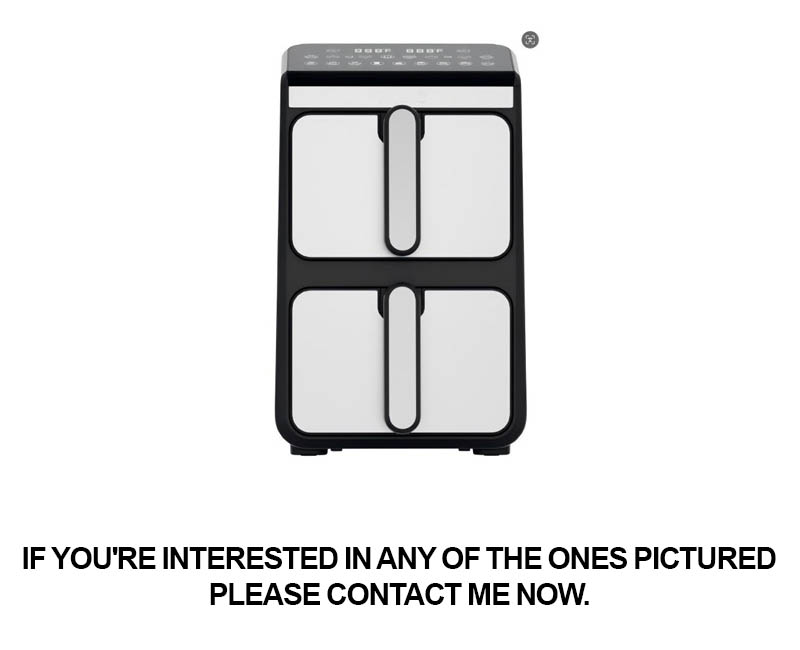
In the ever-evolving world of kitchen appliances, private label offerings have quietly been making waves, reshaping consumer expectations and driving innovation. As the market becomes more competitive, understanding the nuances of packaging in this sector is crucial. This piece delves into the dynamic interplay between packaging design, consumer preferences, and the data-driven decisions that shape the future of private label kitchen appliance packaging.
The market has been buzzing with a newfound trend in the kitchen appliance sector—private label kitchen appliances. Once a niche category, these appliances are now making significant waves in the home cooking world. With their innovative features, competitive pricing, and unique branding, private label kitchen appliances have become a game-changer for consumers looking to enhance their culinary experiences at a fraction of the cost.
In the past, the kitchen appliance industry was largely dominated by well-known brands that commanded premium prices and a loyal customer base. However, the rise of private label appliances has challenged this status quo. These appliances are manufactured by reputable companies but are sold under different brand names at retail stores. This has allowed consumers to enjoy the quality and reliability of high-end brands without the high price tag.
One of the reasons for the sudden surge in popularity of private label kitchen appliances is their appealing pricing. Many consumers are looking for affordable yet high-quality products that won’t break the bank. Private label appliances often offer the same functionalities and performance as their branded counterparts, but at a significantly lower price point. This cost-effective solution has made it easier for budget-conscious shoppers to upgrade their kitchenware.
The design of private label kitchen appliances is another factor that has contributed to their popularity. Manufacturers have been focusing on creating aesthetically pleasing and functional products that cater to a wide range of tastes and preferences. From sleek stainless steel fridges to minimalist countertop ovens, the design of private label appliances is often contemporary and in line with the latest trends. This attention to design not only makes these appliances visually appealing but also complements various kitchen styles.
Moreover, private label kitchen appliances often come with unique features that set them apart from the competition. For example, smart technology has become increasingly common in these appliances, allowing users to control them remotely through their smartphones or integrate them with other smart home devices. This added functionality not only enhances convenience but also provides users with more control over their cooking experiences.
Packaging plays a crucial role in the success of private label kitchen appliances. With a keen eye on market trends, private label brands have been investing in innovative packaging designs that not only protect the products but also convey a sense of value and trust to consumers. These packages are often made with eco-friendly materials, showcasing the brands’ commitment to sustainability.
Sustainability has become a significant driver in consumer purchasing decisions, and private label kitchen appliances have been quick to capitalize on this trend. From energy-efficient appliances to recyclable packaging, these brands are leading the charge in providing environmentally responsible products. This not only attracts environmentally conscious consumers but also positions the brands as thought leaders in the market.
The market trends for private label kitchen appliances are shaped by the changing needs and preferences of consumers. Today’s shoppers are looking for more than just basic functionality; they want appliances that are smart, stylish, and sustainable. By keeping a close pulse on these trends, private label brands are able to stay ahead of the curve and offer products that resonate with their target audience.
Data-driven insights have become integral to the packaging and marketing strategies of private label kitchen appliance brands. By analyzing consumer behavior and market research, these brands are able to make informed decisions about their product design, pricing, and packaging. This data-driven approach ensures that the final product meets the expectations of consumers and stands out in a crowded marketplace.
In conclusion, the rise of private label kitchen appliances has disrupted the traditional appliance market. With their affordability, innovative designs, unique features, and commitment to sustainability, these appliances have become a compelling option for consumers seeking high-quality kitchen solutions. As the market continues to evolve, it will be exciting to see how private label brands continue to shape the future of home cooking.

Private label packaging has emerged as a compelling trend in the kitchen appliance industry, capturing the attention of consumers and manufacturers alike. This shift is not just a passing fad; it represents a profound change in how consumers perceive and interact with the products they bring into their homes. Let’s delve into the reasons behind the allure of private label packaging.
The first factor that draws consumers to private label kitchen appliances is the perceived value they offer. Often priced lower than their branded counterparts, private label products provide a cost-effective alternative without compromising on quality. This affordability is particularly appealing in today’s economic climate, where consumers are constantly seeking ways to stretch their budgets.
Another key attraction of private label packaging is the sense of exclusivity it often brings. While branded appliances are often associated with luxury and status, private label items can cater to a broader market, offering a unique blend of quality and affordability. This niche appeal allows manufacturers to tap into segments of the market that may not be reached by premium brands.
Design plays a significant role in the appeal of private label packaging. Many private label brands have recognized the importance of aesthetics and have invested in sleek, modern designs that resonate with today’s consumers. The clean lines and minimalist approach to design not only make these appliances visually appealing but also contribute to a more cohesive and stylish kitchen environment.
Sustainability is a growing concern for many consumers, and private label packaging often addresses this need. By using environmentally friendly materials and reducing packaging waste, these brands are able to offer a greener option without significantly increasing the cost. This commitment to sustainability resonates with eco-conscious consumers who are willing to support brands that align with their values.
Customization is another aspect that private label packaging excels in. Manufacturers can often offer a wider range of products with varying features and functionalities, allowing consumers to choose the appliance that best fits their specific needs. This flexibility is particularly valuable in a market where individual preferences and kitchen layouts can vary greatly.
The simplicity of private label packaging is also a major draw. With clear, concise branding and packaging, consumers can quickly understand the product’s features and benefits. This straightforward approach eliminates the need for complex marketing strategies and allows consumers to make informed purchasing decisions based on their immediate needs.
In recent years, the rise of e-commerce has also played a role in the popularity of private label packaging. Online retailers often offer a vast selection of private label products, making them easily accessible to consumers. The convenience of online shopping, combined with the cost savings and design appeal of private label items, has created a winning combination for many consumers.
Moreover, private label packaging often includes detailed product information, such as usage instructions and maintenance tips. This level of transparency builds trust with consumers, who appreciate the fact that the manufacturer is invested in their satisfaction and product longevity.
The rise of social media has also contributed to the appeal of private label packaging. Consumers are increasingly influenced by online reviews and recommendations, and private label brands have leveraged this trend by showcasing their products through user-generated content. This peer-to-peer validation has helped to establish a sense of community and trust around private label products.
Lastly, the competitive landscape of the kitchen appliance industry has pushed manufacturers to innovate in their packaging strategies. As more companies enter the market, the need to differentiate becomes increasingly important. Private label packaging offers a unique selling proposition that can set a brand apart from its competitors.
In conclusion, the appeal of private label packaging in the kitchen appliance industry is multifaceted, encompassing factors such as affordability, exclusivity, design, sustainability, customization, simplicity, e-commerce accessibility, transparency, social media influence, and innovation. These elements have combined to create a powerful trend that is reshaping the way consumers perceive and purchase kitchen appliances.
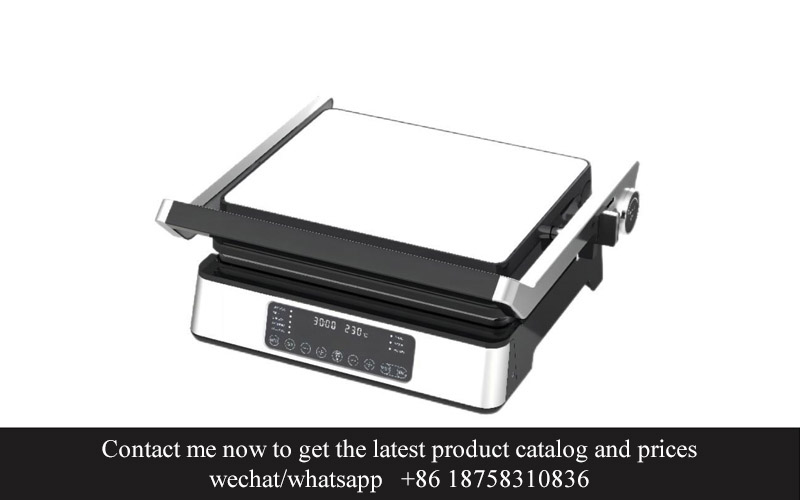
In the competitive landscape of kitchen appliances, packaging plays a pivotal role in capturing the consumer’s attention. Innovative designs in packaging can significantly enhance product appeal, creating a lasting impression that can lead to increased sales. Here’s how it works:
Visual Appeal: The first thing a consumer notices about a product is its packaging. Innovative designs often incorporate eye-catching colors, bold graphics, and unique shapes that stand out on store shelves. This visual appeal can be the deciding factor in whether a consumer picks up a product to learn more about it.
Brand Storytelling: Packaging serves as a canvas for brands to tell their story. Through thoughtful design, companies can convey the essence of their brand, whether it’s through a minimalist aesthetic that reflects simplicity and elegance, or a vibrant and playful design that suggests fun and innovation. This storytelling aspect of packaging can create an emotional connection with the consumer.
Functionality: Packaging that is not only beautiful but also functional can greatly boost product appeal. Consider packaging that doubles as a tool, like a cutting board that comes with a knife, or a container that can be used as a serving dish. Such innovative features can make the product more appealing by offering convenience and utility.
Sustainability: With growing environmental concerns, consumers are increasingly looking for sustainable options. Packaging that is eco-friendly, made from recycled materials, or designed for easy recycling can make a product more attractive. Brands that showcase their commitment to sustainability through their packaging can resonate with eco-conscious consumers.
Interactive Elements: Incorporating interactive elements into packaging can engage consumers in a unique way. QR codes that lead to videos, recipes, or customer reviews can encourage consumers to learn more about the product. Augmented reality (AR) features that let consumers see how the appliance might look in their kitchen can also create a more personalized shopping experience.
Cultural Relevance: Packaging that reflects cultural elements or trends can be particularly appealing to consumers who identify with those aspects. For instance, a kitchen appliance with packaging that nods to a specific country’s design aesthetic or culinary traditions can appeal to consumers who value cultural heritage.
Customization: Personalization has become a powerful driver of consumer interest. Packaging that allows for some level of customization, such as selecting color options or adding a personal message, can make the product feel more special and tailored to the individual consumer.
Quality Perception: Packaging can communicate the perceived quality of a product. High-quality materials, sophisticated design, and attention to detail can all suggest that the appliance inside is also of high quality. This perception can be a major draw for consumers who are looking for premium products.
Packaging as a Statement: Sometimes, the packaging itself becomes a statement, reflecting the brand’s identity and the values it stands for. A sleek, modern design might appeal to tech-savvy consumers, while a rustic, handcrafted look might resonate with those who appreciate a more artisanal approach.
Packaging as an Extension of the Product: Finally, when packaging is designed to be part of the product experience, it can significantly enhance appeal. For example, a kitchen appliance that comes with a beautifully designed instruction manual or a unique gift box can make the unboxing experience feel like a celebration.
Innovative designs in packaging are not just about making a product look good; they are about creating an experience that resonates with the consumer’s desires, needs, and aspirations. By combining visual appeal, functionality, sustainability, and emotional storytelling, packaging can be a powerful tool in driving consumer interest and sales.
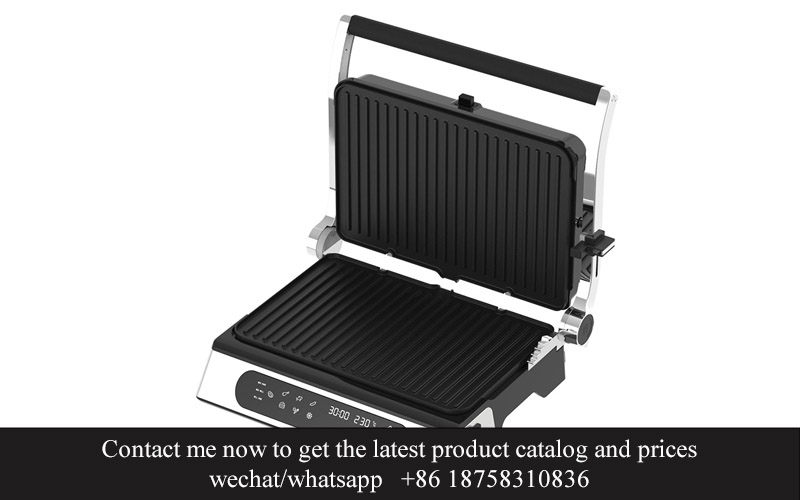
In today’s conscious consumer landscape, sustainability has become a cornerstone of purchasing decisions. Private label kitchen appliances are no exception, as brands seek to appeal to eco-conscious shoppers. Here’s how sustainability is woven into the fabric of eco-friendly solutions in private label kitchen appliances:
The materials used in packaging private label kitchen appliances are a key factor in sustainability. Brands are increasingly opting for recycled and recyclable materials, such as paper, cardboard, and plastic made from plant-based sources. This not only reduces the environmental footprint but also sends a strong message to consumers about the brand’s commitment to sustainability.
Designers are rethinking the traditional packaging approach by integrating features that minimize waste. For instance, instead of using multiple boxes for different components, some brands are creating multi-layered packaging that can be separated and used for other purposes. This not only reduces the overall amount of packaging but also encourages consumers to reuse materials.
Energy-efficient appliances themselves are a testament to sustainability, but private label brands are taking it a step further with their packaging. By using energy-efficient printing methods and ensuring that packaging is lightweight, brands are reducing the carbon footprint associated with transportation and handling.
The concept of minimalism has become a trend in eco-friendly packaging. Private label brands are embracing simple, clean designs that not only look sleek but also use less material. This minimalist approach is not only visually appealing but also practical, as it requires less packaging to protect the appliance during shipping and storage.
Recycling is not just a buzzword but a tangible action in private label kitchen appliance packaging. Brands are including clear instructions on how to recycle packaging materials, and some are even going a step further by offering incentives for recycling. This not only educates consumers but also encourages them to take part in the circular economy.
Sustainability extends beyond materials and design; it’s also about the longevity of the product. Private label brands are focusing on creating durable appliances that are less likely to end up in landfills. By doing so, they are also reducing the need for frequent replacements, which in turn cuts down on waste.
Innovation in packaging is not limited to materials and design; it also includes technology. Some private label brands are incorporating smart packaging that can communicate with consumers about the appliance’s performance and maintenance. This not only adds value but also reduces the need for additional packaging, such as user manuals.
The role of branding in sustainability cannot be overstated. Private label brands are using their packaging as a platform to communicate their eco-friendly values. Through imagery, messaging, and certifications, they are making it clear that sustainability is at the heart of their business model.
Lastly, the lifecycle of the appliance is considered from the outset. Brands are looking at how to design packaging that can be easily disassembled and recycled at the end of its life. This holistic approach ensures that the entire lifecycle of the product, from production to disposal, is sustainable.
By focusing on these aspects, private label kitchen appliance brands are not only catering to the eco-conscious consumer but also setting new standards for sustainability in the industry. It’s a win-win situation where both the environment and the consumer benefit from thoughtful, eco-friendly packaging solutions.
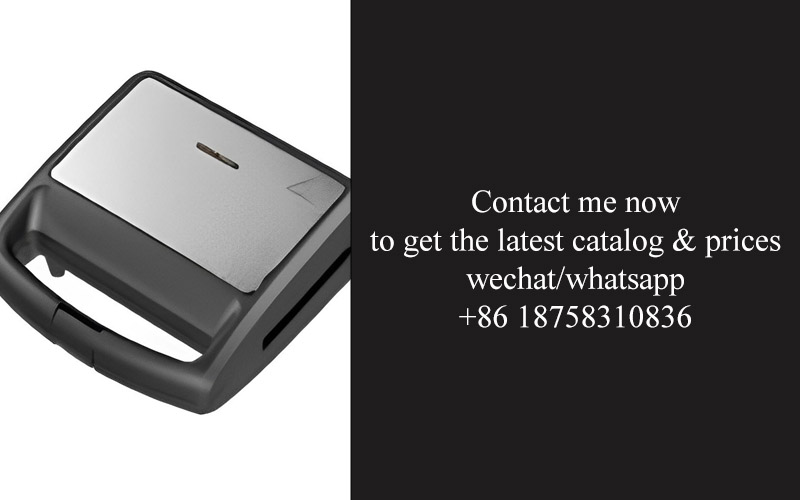
In today’s fast-paced world, consumers are not just looking for functionality in their kitchen appliances; they’re seeking sustainability and eco-friendliness in every aspect of their purchases. This shift in consumer behavior is reflected in the trends shaping the packaging of private label kitchen appliances. Here’s a closer look at what consumers are demanding:
Packaging that tells a story. Consumers are drawn to packaging that doesn’t just protect the product, but also communicates a brand’s values and story. Private label brands are increasingly using packaging that reflects their commitment to sustainability, often through the use of natural and recycled materials, which helps to build trust and resonate with eco-conscious shoppers.
Functionality meets sustainability. The trend towards sustainable packaging isn’t just about using recycled materials; it’s about combining practicality with environmental responsibility. For instance, lightweighting materials reduces carbon emissions during transportation, while still ensuring the appliance is well-protected. Consumers appreciate this balance, as it shows that brands are not compromising on quality or durability.
Personalization and customization. With the rise of e-commerce, consumers are looking for packaging that not only looks good but also offers a personalized experience. This can be achieved through packaging that includes customization options, such as personalizable labels or modular designs that allow customers to select components that align with their preferences and needs.
Clear and transparent labeling. Transparency is key in the packaging of private label kitchen appliances. Consumers want to know exactly what they are getting, including the materials used, energy efficiency ratings, and any certifications that the product holds. Clear labeling helps to build trust and allows customers to make informed decisions based on their values and priorities.
Interactive and digital experiences. The integration of digital technology into packaging is becoming more prevalent. QR codes and augmented reality (AR) can be used to provide additional information about the product, such as maintenance tips, recipes, or even the story behind the brand. This not only enhances the customer experience but also encourages engagement and repeat purchases.
Sustainable sourcing and production. The packaging of private label kitchen appliances is just one part of the sustainability equation. Consumers are increasingly interested in how the product is made and where its components come from. Brands that can demonstrate a commitment to sustainable sourcing and production processes are more likely to attract environmentally conscious buyers.
Minimalist and clean aesthetics. There’s a growing preference for minimalist packaging design that focuses on clean lines, neutral colors, and minimal graphics. This aesthetic not only appeals to the eye but also aligns with the desire for simplicity and sustainability. Minimalist packaging is often easier to recycle and has a smaller carbon footprint.
Community and cause-driven packaging. Consumers are more likely to support brands that align with their personal values and contribute to social causes. Private label brands that use their packaging to promote community initiatives or support environmental charities are tapping into this trend. The packaging itself can serve as a reminder of the brand’s commitment to making a positive impact.
Recyclability and end-of-life considerations. Finally, the end game of packaging is its recyclability. Consumers are looking for packaging that is designed with the environment in mind, from the materials used to the design of the packaging itself. Brands that prioritize recyclability and provide clear instructions for disposal are likely to appeal to eco-conscious consumers who want to reduce their waste footprint.
As the market continues to evolve, the packaging of private label kitchen appliances will need to adapt to these shifting consumer demands. By focusing on sustainability, transparency, personalization, and innovation, brands can create packaging that not only protects their products but also resonates with today’s environmentally and socially aware consumers.
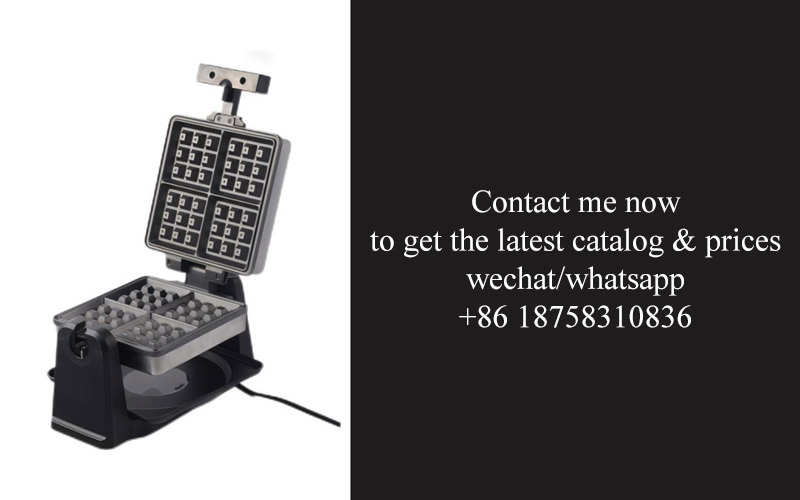
In today’s fast-paced market, data has become a cornerstone for informed decision-making, and this is no different when it comes to packaging for private label kitchen appliances. The role of data in shaping packaging decisions is multifaceted, from understanding consumer preferences to optimizing supply chain efficiency. Here’s how data is at the heart of these decisions:
The Consumer’s Voice: Data analytics allows companies to listen closely to what consumers are saying about their kitchen appliances. By analyzing online reviews, social media mentions, and customer feedback, manufacturers can identify specific packaging features that resonate with buyers. For instance, a data-driven approach might reveal a preference for minimalist designs, leading to sleeker packaging that appeals to a modern aesthetic.
Environmental Concerns: Sustainability is a growing concern for consumers, and this is reflected in their choices. Data on recycling rates, carbon footprints, and material sourcing can guide packaging decisions that align with eco-friendly practices. Companies that use data to track consumer attitudes towards sustainability can design packaging that not only performs well but also communicates a commitment to the environment.
Cost-Effectiveness: Packaging decisions are not just about aesthetics; they also involve cost considerations. Data on material costs, production efficiency, and waste reduction can help manufacturers strike a balance between quality and affordability. By analyzing these metrics, companies can identify cost-saving opportunities without compromising on packaging integrity.
Brand Perception: Packaging plays a crucial role in shaping brand perception. Data from market research can provide insights into how different packaging designs influence consumer perception of the brand. For example, a premium look and feel might be associated with higher-quality appliances, while a more rustic or organic aesthetic could appeal to consumers looking for a more natural product.
Functionality and Convenience: Data can also inform packaging design in terms of functionality and convenience. By analyzing how consumers interact with their appliances and their packaging, companies can create packaging that is easier to open, store, and recycle. This not only enhances the user experience but also contributes to positive brand associations.
Regulatory Compliance: Packaging decisions must also consider regulatory requirements. Data on industry standards and compliance regulations ensures that packaging is not only attractive but also compliant with legal standards. This includes information on labeling requirements, safety standards, and any specific regulations related to the product category.
Innovation and Trends: Staying ahead of market trends is essential for any business. Data analytics can help identify emerging trends in packaging design, materials, and sustainability. By leveraging this information, companies can innovate and differentiate their private label kitchen appliances in a crowded market.
Supply Chain Optimization: The supply chain is a critical component of packaging decisions. Data on inventory levels, shipping times, and logistics can help optimize packaging to reduce costs and improve efficiency. For example, using lightweight materials can decrease shipping weight and fuel consumption.
Consumer Insights: Understanding the demographics, psychographics, and purchasing habits of the target audience is key. Data-driven insights can reveal preferences for certain packaging features, such as color schemes, fonts, and imagery, that align with the brand’s target market.
In conclusion, the role of data in driving packaging decisions for private label kitchen appliances is integral. It ensures that packaging is not only visually appealing and functional but also environmentally responsible, cost-effective, and in line with consumer expectations and regulatory standards. By harnessing the power of data, companies can create packaging that truly stands out on the shelves and resonates with their customers.
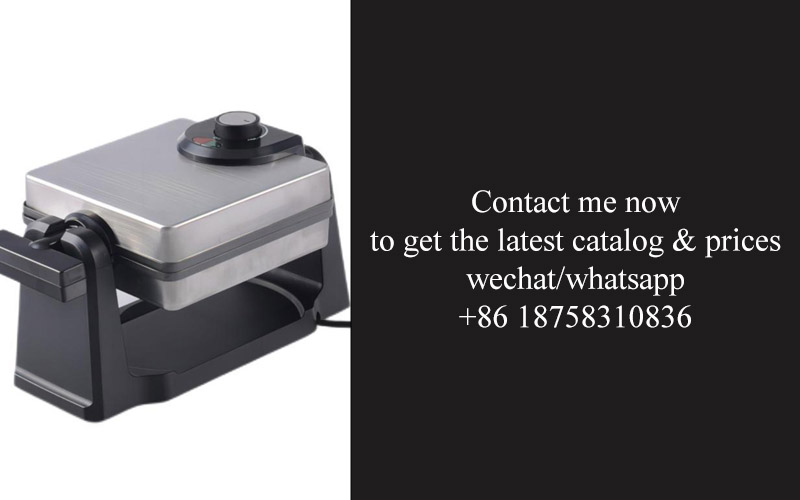
In the world of private label kitchen appliance packaging, there are several case studies that showcase the successful strategies and innovative approaches that have captured consumer attention and driven market success. Let’s delve into a few of these notable examples.
A. The Sleek Minimalism of Brand X: Brand X’s private label packaging stands out for its sleek, minimalist design. The clean lines and lack of excessive branding create a sense of luxury and modernity. Consumers are drawn to the uncluttered aesthetic, which is particularly appealing to the millennial demographic that values simplicity and functionality.
B. Interactive Packaging from Brand Y: Brand Y took a bold step by incorporating interactive elements into their private label packaging. By including QR codes that link to cooking tutorials or recipe ideas, the brand enhances the customer experience and encourages engagement. This not only provides added value but also strengthens the brand’s presence in the consumer’s kitchen.
C. Sustainability Focus from Brand Z: Recognizing the growing trend towards eco-consciousness, Brand Z made sustainability a cornerstone of their packaging strategy. Using recycled materials and biodegradable components, the brand communicates its commitment to the environment. This has resonated with environmentally conscious consumers, leading to increased brand loyalty and sales.
D. Local Craftsmanship Highlighted by Brand AA: Brand AA’s private label kitchen appliances come with packaging that emphasizes local craftsmanship. By showcasing the origins of the materials and the artisans involved in the production process, the brand builds a narrative around its products. This storytelling approach has created a sense of authenticity that appeals to consumers who appreciate unique, handcrafted goods.
E. Smart Packaging with Tech Integration by Brand BB: Brand BB integrated smart technology into their packaging, allowing customers to connect their appliances to their smartphones. The packaging not only highlights the convenience of the technology but also serves as a marketing tool to demonstrate the brand’s commitment to innovation. This has been a hit with tech-savvy consumers who are looking for smart kitchen solutions.
F. Color Psychology and Brand C: Brand C understands the power of color in packaging. By using a warm, inviting color palette, the brand’s private label appliances stand out on the shelves. The strategic use of colors like red for energy and excitement or green for health and freshness influences purchasing decisions, making the products more appealing to specific target markets.
G. Customization and Personalization from Brand DD: Recognizing the desire for individuality, Brand DD offers customizable packaging options for their private label appliances. Consumers can choose from a variety of designs and even upload their own images or text. This level of personalization creates a unique bond between the customer and the product, leading to higher satisfaction and repeat purchases.
H. Packaging as an Extension of Brand Story by Brand EE: Brand EE has crafted a packaging design that tells a story, reflecting the brand’s heritage and values. The packaging design includes elements that nod to the brand’s past, such as vintage fonts or iconic symbols. This storytelling approach not only educates the consumer about the brand but also creates a sense of nostalgia and connection.
I. Packaging that Encourages Social Responsibility by Brand FF: Brand FF’s packaging design is not just visually appealing; it also serves as a call to action for social responsibility. The packaging features messages and visuals that encourage consumers to engage in sustainable practices, such as recycling or reducing food waste. This approach not only promotes the brand but also promotes a broader social cause.
These case studies illustrate how private label kitchen appliance packaging can be a powerful tool for differentiation and brand building. By focusing on innovative designs, sustainability, technology, customization, and storytelling, brands can capture consumer interest and stand out in a competitive market.
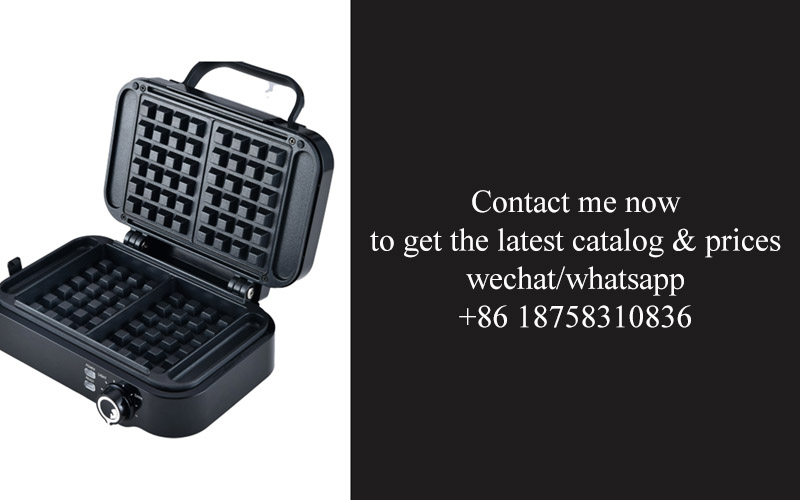
In today’s market, private label kitchen appliance packaging is not just a means to protect the product; it’s a strategic tool that can make or break consumer perception. From materials to design, the nuances of packaging can significantly impact the consumer’s choice. Let’s delve into a few notable case studies where private label kitchen appliance packaging has hit the mark.
One such success story is the collaboration between a mid-tier retailer and a small appliance manufacturer. The retailer wanted to differentiate their private label brand in a crowded market. The packaging team decided to use a minimalist design approach, focusing on high-quality materials and clear, informative labeling. This strategy resonated with the consumer’s desire for modern and sophisticated aesthetics, and sales of the line soared. The packaging was not only functional but also conveyed a sense of premium quality, making it a standout choice in the market.
Another example involves a large home appliance brand that decided to revamp its private label packaging to address sustainability concerns. By switching to recycled materials and incorporating biodegradable components, the brand was able to appeal to environmentally conscious consumers. The packaging design also featured clear messaging about the product’s eco-friendly attributes, leading to a positive brand image and increased customer loyalty.
In a third case, a private label brand aimed to tap into the rising trend of health-conscious cooking. The packaging design included vibrant colors and imagery that evoked a sense of freshness and vitality. Additionally, the packaging highlighted the appliance’s ability to cook a variety of healthy meals, from low-carb to gluten-free. This approach not only catered to the aesthetic preferences of consumers but also to their dietary needs, resulting in a successful launch and a strong brand identity.
These case studies highlight the importance of packaging in shaping consumer perception and driving sales. However, they also point to a broader trend: the increasing demand for packaging that is both functional and reflective of the consumer’s values and aspirations.
As we look ahead, several factors are shaping the future of private label kitchen appliance packaging:
Personalization: Brands are beginning to customize packaging to cater to specific consumer segments. This could mean everything from localized designs to packaging that reflects individual dietary preferences or cultural backgrounds.
Sustainability: With environmental concerns at the forefront, we can expect to see more sustainable materials and packaging practices. This could include biodegradable materials, water-based inks, and recycled content, all designed to reduce the environmental footprint of kitchen appliances.
Technology Integration: The use of augmented reality (AR) or QR codes on packaging can enhance the consumer experience by providing additional information, interactive content, or even virtual demonstrations of the appliance in use.
Eco-conscious Marketing: Packaging will play a pivotal role in conveying the brand’s commitment to sustainability. This means transparent labeling that clearly communicates the eco-friendly aspects of the product and its packaging.
Cultural Sensitivity: As global markets become more diverse, packaging will need to be culturally sensitive, avoiding stereotypes and ensuring that it resonates with a wide range of consumers.
Innovation in Materials: We’re likely to see more innovative materials being used in packaging, such as plant-based plastics, that are not only sustainable but also visually appealing.
Emotional Connection: Brands will focus on creating an emotional connection through packaging design, using imagery and language that evoke positive feelings and reinforce brand values.
The future of private label kitchen appliance packaging is one of innovation and adaptation. As consumer preferences continue to evolve, so too will the strategies used to package these products. By staying attuned to market trends and consumer values, private label brands can ensure their packaging not only protects the appliance but also enhances its appeal and value in the eyes of the consumer.